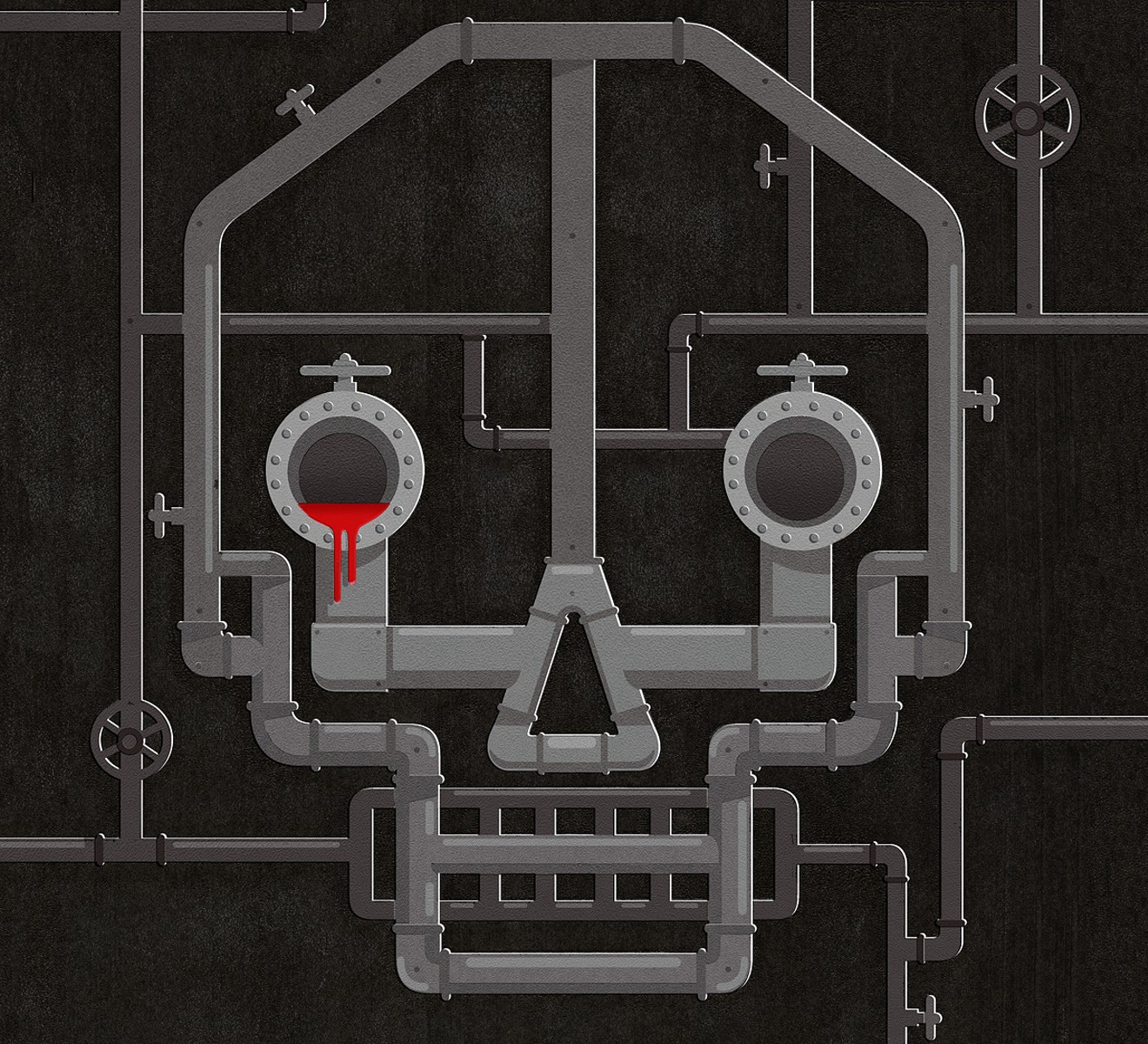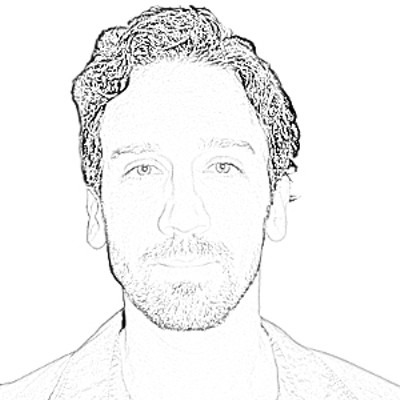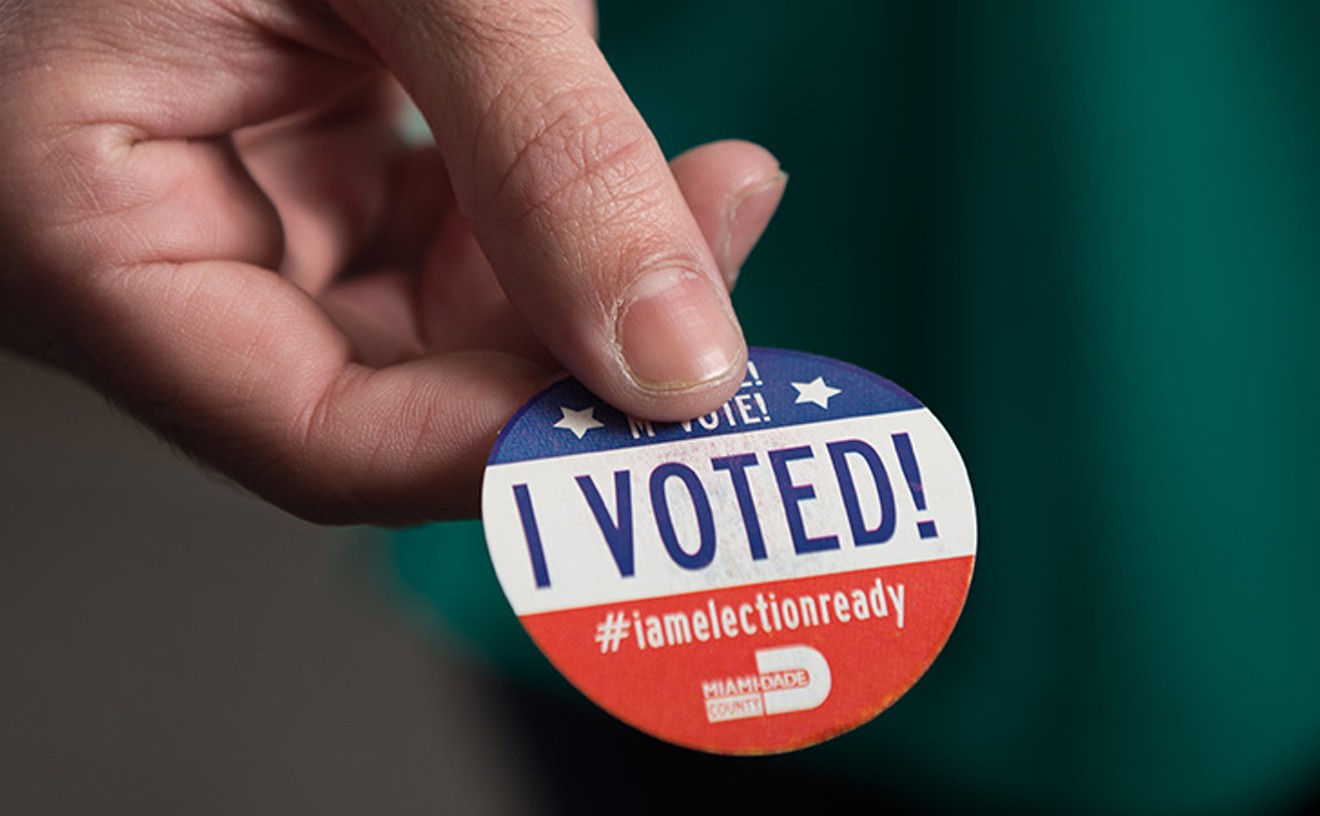In last week's story "Morningside Pump House Might Unlock the Secrets of Murderer Robert Bowman," businessman Robert Bowman killed 14-year-old Eileen Adams in an Ohio basement, dumped her body, and left for Miami, where he moved into a former pump house. In that home, which would become Café Roval on the city's Upper Eastside, he led a strange life until his wife Margie finally left him.
It was just before midnight December 5, 1981, when Margie Bowman walked into a Toledo police station. She was drunk. She was always drunk then. She had mentioned the girl in the basement here and there, but no one had believed her. Few people outside Toledo had heard about Eileen Adams, and Margie's story sounded like the ramblings of a drunkard.
But now she was divorced from Robert Bowman and living with her boyfriend Fred, and her nightmares had grown worse since she had returned north three years earlier. Many nights, she'd wake up screaming. Fred knew the story of Eileen and believed the twisted tale Margie had told him. He didn't wait until the morning. He drove her, inebriated and terrified, to the police station.
The cops were intrigued by Margie's story, but she wasn't the first woman to claim that her husband had killed Eileen. In 1967, after the girl's body was found, hundreds of tips had flooded in. Many were from women accusing their husbands and exes. Other suspects continued to emerge throughout the 1970s. The story of Bob Bowman was just one more, from an alcoholic whom they had arrested on a drunk-and-disorderly charge the previous year. Besides, Eileen Adams was long thought to have been the victim of John Norman Collins, a serial killer who raped and mutilated several young women in southern Michigan in the late '60s. And if Margie's story were true, why had she waited 14 years to come forward?
"Well, one, I was afraid of him," she told them, "and, two, I was afraid because he made me go with him, [so I thought] I'd be found an accessory [even though] I didn't do nothing."
During the following weeks, police interviewed Margie six times — once under hypnosis and once at a local bar where she opened up after a few drinks. She told them how Bob had tied up and killed Eileen, about his smarts and temper, and that he read and studied all the works of the Marquis de Sade, an 18th-century French writer whose books depict sexual violence, rape, incest, and pedophilia.
Sufficiently convinced, detectives sent a letter to the North Miami Police Department January 22, 1982, asking the officers to locate Bob Bowman. Bob Lynch, a newly minted detective at the department, read the letter and immediately realized Bowman was a local drifter whom he often saw wandering on Biscayne Boulevard. He wore all-white clothes and sometimes carried a large sack or pushed a shopping cart.
Lynch, who is now an adjunct professor at Miami Dade College's School of Justice, brought Bowman in for questioning. "I spoke to him for probably three or four hours. I hate to use the word 'nutcase,' but you could tell the guy wasn't all there. It was a strange, strange couple of hours," he says.
Testifying at Bowman's trial in 2011, Lynch elaborated: "At first he was very calm, gracious, sat at the table with us. As soon as we started to talk about things in Toledo, Ohio... he would become extremely nervous, start chain-smoking, start shaking almost violently, and then, instantly, he'd launch into a 20- or 30-minute talk about how at one point he was Jesus Christ, he'd been on the Earth seven or eight times previous; if [General] Custer had listened to him, he would have won the war. You know, stuff like that."
The detective pocketed the head of a Ken doll with a three-inch nail hammered into it.
tweet this
Lynch pointed at him and asked bluntly, "Did you kill this young lady?"
Bowman grew calm and almost happy for a second, then animated. He threw his hands into the air and said, "Maybe I did. Maybe I didn't. You're the detective — you figure it out."
"It was almost like he was playing with us," Lynch says.
After the interview, Lynch took Bowman home to an abandoned restaurant on Biscayne Boulevard at NE 114th Street called the Painted Horse. Bowman said the owner paid him $10 per month to keep an eye on the place. He slept on a cot in a small side room that he kept relatively neat. The rest of the place, though, was a wreck. The roof leaked. It was infested with rats and smelled like dead animals and rotted food. Bowman called it his art studio. He collected trash he found on the street and made installations. One of them consisted of limbs from broken dolls nailed to the wall and the floor.
Above the doorway to his room, Bowman had hung a Spider-Man action figure. The hands were tied behind its back, its feet were bound, and a large needle was driven through its forehead.
Lynch went back to the station and called the Toledo Police Department. "You need to get someone down here," he told them.
Seven days later, the two Midwestern detectives who had been speaking with Margie landed in Miami. Toledo Det. Dan Brimmer and Monroe County, Michigan Det. Pete Navarre visited Bob Bowman at his so-called studio.
He invited them in and told them to make sure they didn't step on the cockroaches because they were his friends. Seven rats also lived there. Bowman knew them by name. He tickled their bellies and said they came in at night and sat in a nice little circle to have dinner with him. He was dirty and smelly. He was dressed in all white.
The detectives told him they'd been speaking with his ex-wife.
Bob responded that Margie was a drunk and habitual liar. He rambled on about his past lives and energy plan — a new way to power the world with renewable energy. Margie, and now the detectives, he said, were simply trying to interfere with that plan.
Detective Navarre asked him if Eileen Adams had ever been in his house in Toledo.
"Maybe. Maybe not," Bob answered.
For the next three days, the detectives talked to Bob for several hours a day, trying to nail him on specifics. The prosecutor's office in Toledo had told them they would need to get a confession to bring Bob home. Otherwise, they didn't have enough evidence. But Bob neither confirmed nor denied anything. He skillfully skirted questions while controlling the conversation, enjoying the back-and-forth and throwing out teasers now and then to stimulate the discussion.
Navarre got in Bob's face and pointedly asked, "How did Eileen Adams happen to be in your white Thunderbird?"
Bob looked at him and coolly answered, "It was a blue Thunderbird."
The detectives flew back to Toledo. Navarre concluded in a report that Bob was insane yet at the same time "fully aware of his wrongdoings and intelligent enough to avoid making statements that would directly lead to his arrest."
The detectives met with experts at the University of Michigan to figure out the best way to interview Bob. A few weeks later, they got a call from Irv Zimmerman, the owner of the building in Miami where Bob was living. Zimmerman was aware of the investigation and told the detectives he had sold the property and would soon ask Bob to leave. If they wanted to talk to him again, they needed to come immediately.
On April 5, 1982, the detectives returned to Miami, this time for four days. Again, they spent hours speaking with Bob at his squalid home. But he gave them nothing like the confession they needed to arrest him.
On their last day, while Bob was being evicted from the Painted Horse, Detective Brimmer pocketed the Spider-Man action figure and the disembodied head of a Ken doll with a three-inch nail hammered into the back of it. As Bob was leaving, according to a 2007 Miami Herald article, he told the detectives: "You'll never see me again, and if I ever come back to Toledo, you'll be surprised at what I know."
Then he disappeared onto the streets of Miami.
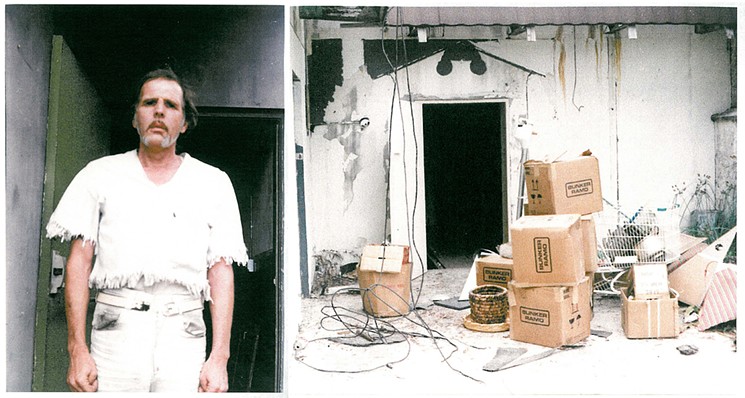
Shortly after returning to Michigan, a chief of detectives who had accompanied Navarre and Brimmer to Miami to supervise their investigation wrote a letter to Kenneth Harms, the Miami Police Department's chief at the time. The letter explained who Bob Bowman was and said the alleged killer had hinted to detectives that the body of another "murdered child" might be buried at the pump house. "During [an] interview with an officer from our agency," he wrote, "Bowman described the homicide of a young girl about 2.5 years ago in the Miami area."
Bowman, according to the letter, said the girl had been "sexually mutilated."
"Please recognize that the suspect is probably mentally unstable and much of his conversation is based on unfounded and even impossible tales," the letter continued. "However, on the chance that he was attempting to relate an accurate occurrence, we would request that your department check the well or wells."
Dan Christensen, a longtime South Florida journalist, reported on the letter in 1988 when he was working at the Miami News, a 92-year-old newspaper that would cease publication later that year. Christensen, who now runs Florida Bulldog, a nonprofit investigative news site, says that he obtained a copy of the letter shortly before publishing his article and that no other media outlet covered the story.
At the time, the pump house was owned by a doctor named John M. Kennedy, although it's unclear if he actually lived there. According to Christensen's article, no search was ever made of the home.
"Miami police decided that the details provided by Bowman were too sketchy to warrant the cost," Christensen reported. "The wells are in the backyard and beneath a hot tub built into the living room floor."
"The cost of going in the well would be prohibitive," Christensen was told by Miami Police Lt. Ernie Vivian, who once supervised the case. "We weren't going to do it on the little bit of information we had. You can't take a bulldozer into someone's home on sketchy information."
Former Miami Det. Ed Hanek, who would die in 2007, told Christensen he had been assigned to the case just weeks before he was to retire. He said he never was able to contact Bowman and, without more information, his bosses wouldn't approve a search of the wells.
"As far as I'm concerned, there was probable cause to look, but the city wouldn't finance it. Money was the big issue," Hanek said. "I missed Bowman by five minutes one time... But all this was happening as I was getting ready to retire, and I was swamped with things to do. Nobody seemed interested, so I just said the hell with it."
Christensen, meanwhile, was also sidetracked. "This story was in June '88," he says today. "In September, Cox [the corporation that owned the Miami News] announced they were planning to shut down the News, and things got kinda crazy around there. The paper closed at the end of December... I am pretty sure of one thing, though: The News did not follow up because there was no police action to follow up on."
"The wells are in the backyard and beneath a hot tub built into the living room floor."
tweet this
It's no wonder. "In 1980-81, Miami had the highest murder rate of any city in the world," according to a 1987 New York Times article. "So many bodies piled up in the morgue that at one point the coroner had to rent a refrigerator van to handle the overflow." The following year wasn't much better. The murders, mostly drug-related, overwhelmed local homicide detectives.
Today the Miami Police Department says it has no records on either Bowman or the pump house. Attempts to reach some of the surviving detectives mentioned in Christensen's article were unsuccessful. Kennedy, who owned the home at the time, also couldn't be reached for comment.
Ironically, by the time Christensen's article was published in 1988, the pump house had a new owner and was dilapidated and vacant, so a search actually might have been viable. "I remember going to the place before the story ran," Christensen says. "It was a mess."
In 2010, the Biscayne Times reported that by 1988, the pump house had become an encampment for vagrants and a dumping ground for hundreds of used tires, stripped cars, and debris. In 1994, after an intentionally set fire caused part of the cathedral ceiling to collapse, the city ordered the pump house to be demolished. A Herald article sparked public outcry, however, and then-Miami Mayor Steve Clark halted the order.
The owner, the now-deceased Everett Gum, donated the property to the preservation group Dade Heritage Trust in 1995. The following year, real-estate investor Sal Patronaggio purchased the place for $16,500, installed a new roof, and began the restoration process. Four years later, he sold it to J.B. Kilpatrick and his wife Sabrina D'eca for $208,000. Kilpatrick did extensive renovation and landscape work, including three years of chiseling the elaborate backyard water feature out of the ground. In 2006, the couple opened a hair salon at the newly beautified pump house.
"There's known to be three or four bodies buried on the property from what I hear," Kilpatrick said at the time. "I didn't come across that personally, but I heard it... Digging up this property, I saw a lot of bones. I'm sure most were animal bones, but I really didn't pay too close attention — the pile of debris here went almost to the roof."
Could Bob Bowman, however, have placed a body inside one of the property's wells, as alluded to in the letter sent to the Miami Police chief in 1982?
A promotional pamphlet from the '20s said the pump house had two six-inch wells that were 60 feet deep — too small to accommodate a human body. Patronaggio said that those wells were capped off when he bought the property in 1996 and that Kilpatrick eventually located them. Kilpatrick said the wells were dry when he moved in. Later, though, he said they fed his backyard water feature.
Margie Bowman recalls an oblong pond of some kind in the backyard in the '70s. She believes it was connected to the wells. Could it have concealed a body? "I suppose so," she says. "I have no idea. I was under the impression they went there and dug it up already."
Asked to explain the many animal bones found on the property, she simply says, "Yeah, my little white dog. Bob cut his head off. Horrible man."
In 2010, Kilpatrick declined to directly address Bob Bowman's claim that a girl was buried on the grounds; he was worried it would affect his property's value and scare off buyers. His concerns, however, were unfounded. Restaurateur Mark Soyka had been eyeing the property for years, hoping to someday acquire it and convert it into a restaurant. Soyka paid Kilpatrick $1.6 million in 2014 and opened Café Roval in late 2016 to universally positive reviews and bustling crowds. The pump houses' dark days were relegated to history.
Soyka says that he had the pump house's wells repaired when he bought the property and that they are now functional. Asked if he would allow Miami Police to search the grounds of his restaurant for human remains, he answers simply: "No."
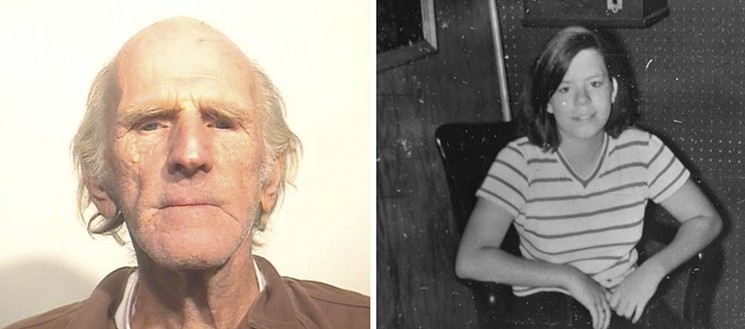
In 2006, a cold-case detective from the Toledo Police Department knocked on Margie's door in Hollywood, Florida, where she was living. He wanted DNA samples from her and her daughter.
Earlier that year, Larry Adams, in the beginning stages of dementia, had told an off-duty police officer about his daughter Eileen's murder in 1967. Adams had spent two decades consumed by grief and anger and, like Margie, had turned to the bottle. Eventually, he became a deacon in the Catholic Church and preached forgiveness. The officer took his strange tale to the cold-case squad, which began investigating. Realizing the potential to solve the forgotten case using DNA, the team reactivated it and approached Margie.
"I tried and tried for so many years [to get Bob arrested] until I finally gave up," Margie says. "And the minute I gave up, they come to my door."
DNA from the semen in Eileen's underwear matched a DNA sample provided by Bob's daughter. Bob Bowman was arrested two years later in Cathedral City, California, where he'd been living under a tarp in the desert.
At his trial in 2011, Bob didn't take the stand. Margie, meanwhile, fumbled to answer simple questions. At one point, she claimed she couldn't remember where in Toledo she had grown up. Bob's lawyer effectively cross-examined her while questioning the accuracy of DNA technology. He also challenged the idea that Eileen Adams had eluded Margie's attention until she ventured into the basement to hang her laundry.
The trial ended in a hung jury.
At his retrial later that year, Bob took the stand. His testimony was effusive, fast-paced, and lacked bizarre rambling. He offered coherent explanations for most of the evidence presented by the prosecution. But in a police interrogation audio clip played for the jury, he explained the presence of his DNA in Eileen's underpants this way: "It means I fucked her. It doesn't mean I killed her."
The jury disagreed. Bob received a life sentence October 28, 2011, bringing the long, dramatic case to a satisfying end.
But that didn't solve the question of whether he had other victims.
The body was discovered two years later by workmen hired by a new tenant.
tweet this
The popular TV show America's Most Wanted, which profiled Bob in 2007 before his capture, stated, "Because Eileen was tortured and raped and violently killed, [police] worry that Eileen's murder was not a one-time event. Detectives say that Bowman is a sociopath, very intelligent, and has likely done it again over the past 40 years."
Publicity surrounding the case, meanwhile, led several women to come forward with stories about how Bob had tried to lure them into his car when they were teenagers in the 1960s. Michigan's Detective Navarre says police also know of other young women "he showed an interest in" later on. One was "a female that was working for him at a restaurant."
Then there's the dead boy in the closet at Bob's former North Miami apartment. "They discovered it, I believe, just during the process of checking where he had lived," Navarre says.
Navarre doesn't recall the boy's name, but legendary Miami crime reporter Edna Buchanan says she covered a story about a 5-year-old named Maurice Lewis whose body was found in a closet in the early '80s.
Lewis had been left in the care of a family friend when his mother went to jail for a short period. That friend, Arlie Phaneuf, beat the boy with a stick one night in 1981 for misbehaving and then sent him to bed. In the morning, he was dead. Phaneuf then asked an acquaintance, Harry Weiner, if she could stay with him in his apartment at 1350 NE 119th St. While Weiner was at work, Phaneuf snuck the boy's body into Weiner's ground-floor apartment and sealed it inside a cinderblock enclosure she had built at the back of a closet. She told Weiner it was to store some personal belongings. Somehow he accepted the explanation. The body was discovered two years later by workmen hired by a new tenant to do renovation work. Phaneuf was convicted of second-degree murder in 1990.
How Bob Bowman fits into that narrative is unclear. Neither Phaneuf, who was released from prison in 2007, nor former Metro-Dade homicide Det. John Butchko, who led the investigation, responded to New Times' messages seeking information about Bob. Detective Navarre doesn't recall Bob's former North Miami apartment address but says, "The word down there [in Miami] at the time was, 'Yes, that's [the apartment] where he lived.'"
In 1981, at the time of the boy's murder, Bob was living the life of a drifter, staying wherever he could. A good friend of the Bowmans, Lana Ellis, lived three houses away from the building where the body was found. Ellis was interviewed by police in 1982 concerning Bob's whereabouts. Whether he stayed with Ellis at any point, or knew her neighbors, is unclear.
Also unclear is whether a search of the pump house is still possible.
"Without some compelling information, I don't know if somebody would spend the kind of money it would take to look at that," says Bob Lynch, the former North Miami detective who located Bowman in 1982. "You're looking at [using] ground-penetrating radar and all that kind of stuff. But a good homicide team, if they really wanted to look into it, the first thing would be to go up to Ohio to interview [Bob]... It's the cost of the trip and a couple of days per diem. But as busy as they are with the stuff they're doing right now, I don't know if they're willing to spend the time and money to do it."
The Ohio Department of Rehabilitation and Corrections did not approve New Times' repeated requests to interview Bob. Detective Navarre, however, says he'd be willing to drive from his home in Michigan to chat with the 81-year-old prisoner if Miami Police were interested.
Margie, who now lives in Alabama, doesn't even want to think about Bob anymore. "He shouldn't even be alive," she fumes. "They should've given that prick the chair. It's hard to believe I'm still sane. It's taken years to get normal."
Asked to explain Bob's mind, she says, "He's very intelligent, but I think he passed over that superior line and went to a nut farm. It's like he's possessed or something."
Exasperated, she adds, "I don't know what's wrong with him, and I don't really give a shit. I wish he'd die. How long is he going to live?"
Read the first part of this story, "Morningside Pump House Might Unlock the Secrets of Murderer Robert Bowman."

